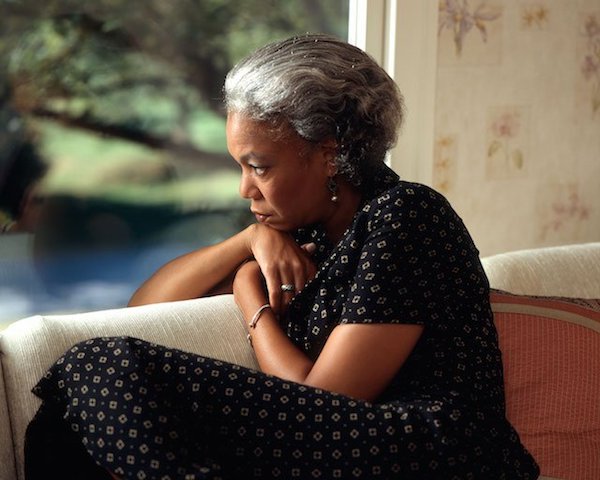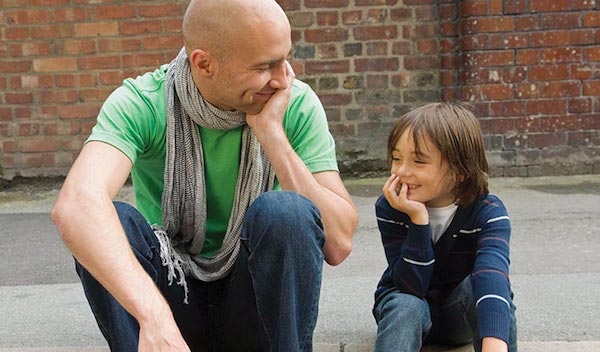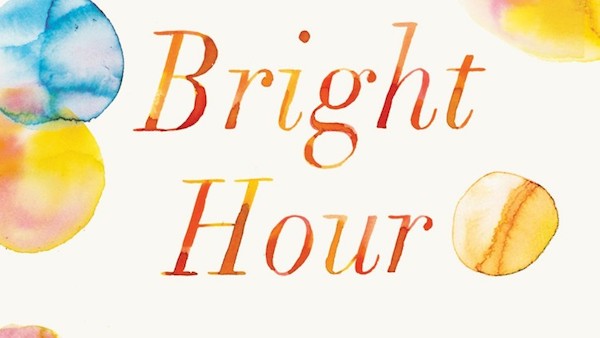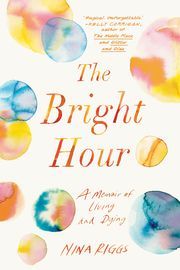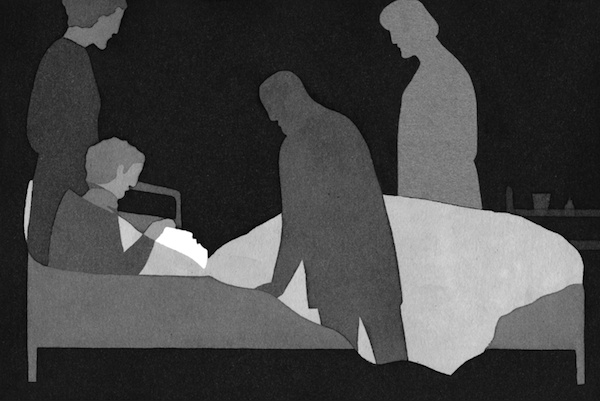by Mackenzie E. Rockcastle
[N]ext week, I have my second scan since being diagnosed with terminal cancer.
The thought of the little white masses glowing brightly on my doctor’s computer monitor leaves my stomach unsettled—leaves my mind unsettled.
As my “scanxiety” builds, I find myself leaning on my own advice to approach my fears of dying. A few weeks ago, I gave my therapist a breakdown of what I thought were my general fears surrounding death. She was surprisingly thankful for my analysis of such an enormous concept and fear that is shared by so many. She told me many of her patients held an irrational fear of dying. Breaking death down into the smaller fears that truly comprise the overall terror for the word makes it a little less intimidating.
She believed this mindset could help some of her other patients get to the root of their obsessions. So I thought to myself, perhaps my breakdown of death—one that has helped me unveil my true fears, befriend my own death, and enhance my life—could help others do the same.
To start the process of grasping my fears surrounding death, I first had to ask: Is it possible to create a good relationship with death? And in order to create a good relationship with it, well, perhaps we need to understand why we have such a bad relationship with it.
I personally see four major reasons to feel uncomfortable about death. All of them associate with fear. Fear of the dying itself, fear of what lays beyond death, fear of the life we will never live, and fear for those we leave behind.
At this point, I believe I’ve come to peace with three out of the four. But I had to ask (and continuously have to ask) myself the following questions:
1. What is dying?
Dying is a physical action. It is momentary. Physical pain may be associated, but it is temporary, not eternal. Dying is generally defined as “to stop living.” This definition causes death to be associated with the opposite of life. I don’t like this association, and I don’t believe it properly does justice to the word death.
As a young child in school, I specifically remember doing worksheets to understand opposites: on/off, black/white, night/day, life/death. Looking at a lot of ancient cultures, many have a book of the dead: The Egyptian Book of the Dead, The Celtic Book of the Dead, The Tibetan Book of the Dead, and so on. The way that most of them describe death is not as the opposite of life, but the opposite of birth. I think this shift in language—this shift in the juxtaposition of life and death—is important.
It is an entirely different concept. It suggests that we walk into a room and we walk out of a room, not that the room disappears.
2. What comes after death?
Since this is the most uncertain part of the equation, this question can bring about the most fear. Do we fear an almighty man in the sky? Burning for all eternity? That, maybe, this is it? Religion, upbringing, what we’ve experienced, what we’ve watched, and what we’ve read all play into what we believe happens after death. But the reality is, no one knows for certain. Beliefs, faith, and religion aside, really no one can say without a shadow of a doubt what happens when we die.
In this thought, some people hold fear, and some people hold peace.
For me, this is the most fun part. As a nonreligious, but spiritual person, this is a playground of opportunity. I personally don’t hold a fear for this. Rather, I see the space beyond death as a a beautiful existence where our beings no longer hold their human form. I acknowledge my brain doesn’t have the capacity to understand this fully, and therefore I don’t try too hard to create an image or definition to coincide, rather just a feeling. This is the part of death I feel to be the most reassuring, warm, and whole. It’s the presence that gives full peace.
3. Are we afraid of the things you will miss out on, the things we never did, or the things we’ll never do?
This fear is actually comprised of regret. These are the things in life we always thought we’d achieve or have the time for. The places we wanted to go. The people we wanted to meet. The food we wanted to eat. The adventures we wanted to take. This is bucket-list stuff, and is constantly shifting. It’s understandable to want more time to do more things, but, in fact, more incentive to live fully while we know we are here. Carpe f*ckin’ Diem, right?
The longer we live, we assume, the more likely we are to achieve our dreams and desires. And sometimes this is true. At 21, my initial diagnosis left me thinking I’d never graduate from college. A year later, I graduated with my class. At 23, just two weeks after finding out my cancer had returned, I stood next to my beautiful sister-in-law as she married my brother. I cried a good amount, most tears were of joy, but some of the salty droplets fell from the thought that I may never live long enough to get married. A year passed, and I did.
I realize some of those things can’t always be attained. I have certainly shed a tear or two over the thought of the empty bedrooms in my home that echo with the cries of babies who are not mine, and are not there. While the thought is sad, it too passes. My perspective goes beyond that. I have a lot of dreams. But if I don’t attain them, I am at peace with that. And I think part of that acceptance is the realization that it isn’t those big “achievements” that were my favorite parts of life thus far.
It’s the nitty gritty. The naughty. The unexpected. The unconventional things that are mine. And if that’s what we enjoy about life—the little things and the uniqueness of the bonds we’ve made—then maybe we can take away the bigness of death. Maybe if we break it down into the little things about it we can start to get on the same level as it. Maybe we can start to repair this broken relationship with death.
4. Do we hold a fear for those we’ll leave behind?
Currently, this is my greatest fear associated with my own death. I fear for the pain inflicted on those who will heavily feel my void. I am trying to remedy this by reminding them that my purpose here may be just that: a reminder. A reminder and an inspiration. And whatever is happening, it’s supposed to. It’s fluid and it will make sense. If I were to die soon, I know the little things people will see and think of me for.
Little jokes that will make them laugh. Spaces, patterns, and songs that will make them smile. And that is what makes us immortal: our essence. I believe that’s what we become when we die. And if I can inspire people to pursue the things that make them smile, laugh, and feel joy—feel love—that is a gift greater than I can take credit for. It gives me peace to know I will, in some way, be with them.
But, I can stare into my mothers eyes and tell her how at peace I am over a bottle of wine at lunch. And I am. But when I swivel around that table and look through her eyes, what do I see? My baby girl dying? F*ck, I can’t imagine. Nor, probably will I ever have to (which adds into the f*cked-up-ness of the thought).
I can physically feel the heaviness of my husband’s sadness as he lays his body on top of mine just to make sure I’m still there. I can run alongside my best friend and no empathy is needed, because the thought of losing her is the exact same weight as her thought of losing me. I can talk bucket-lists with my dad, who is battling Stage 3 cancer, with stipulation on both ends on how things are doing in a few months—a most unusual fate not typically shared between a father and daughter simultaneously. I can go out with my brothers or my friends and share meals, drinks, and laughs.
A big part of the problem is we continue to view death as an end—that we’ll never be able to share those same meals, drinks, and laughs again. But we wouldn’t anyways. That’s how time works. Part of making peace with death is making peace with time. Perhaps it’s the most perfect preserver of time—the relationship we had is exactly the relationship it will always be. We will always have shared that meal. We will always have shared that drink. We will always have shared that laugh. Allowing the fleeting to fleet. And letting life slip into death, in the beautiful, exact way it’s supposed to.
But, still, this is where I find sadness: in the sadness of others. I don’t like being the source of peoples’ pain. It’s the part that hurts the most. So no, this piece I am not yet at peace with. But it is a shared burden. And I believe the more at peace those I love become, the more at peace I’ll become. Which is the point of this whole thought: How do we better our relationship with death?!
I suppose a more complicated question then becomes: How do we better our relationship not only with our own death, but with the death of others? And I’m starting to think this is a full circle concept. If we better our relationship with our own death, we better our relationship with the death of others.
I think the first step is talking about it. Often the conversation is met with: “I can’t bare the thought.” But what if we did? What if we did just f*cking bear the thought? What would we do differently? How would we treat each other differently? How would we live differently? Can being friends with death make us have a better life?
I whole-heartedly believe the answer is yes.
I think as we visit and revisit each of these four major parts of death, we continue to delve deeper and deeper into a peace with it. A peace with our own death, a peace with the death of others, and a life more fully lived.
Complete Article HERE!

